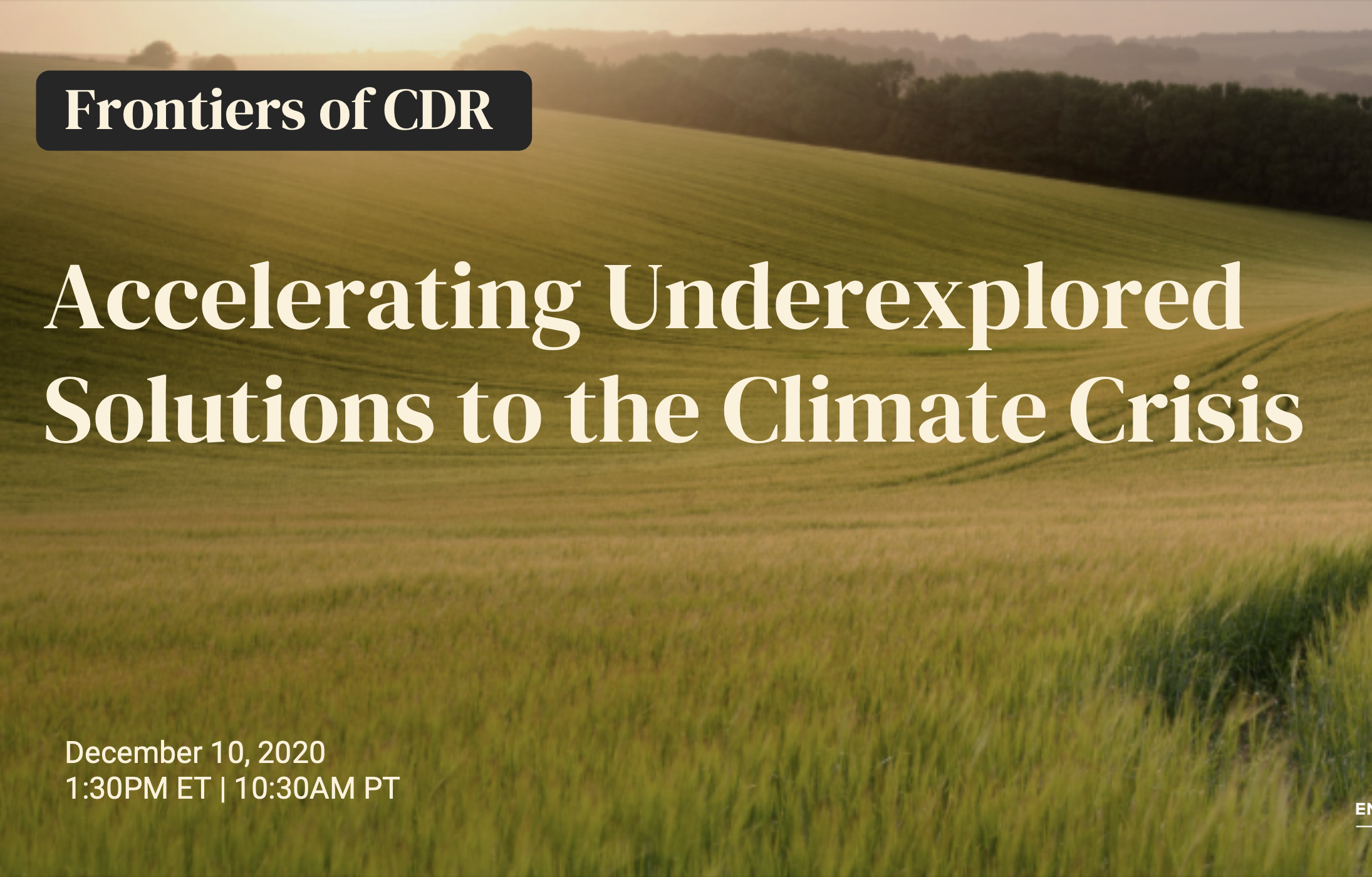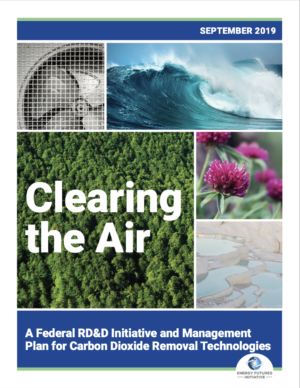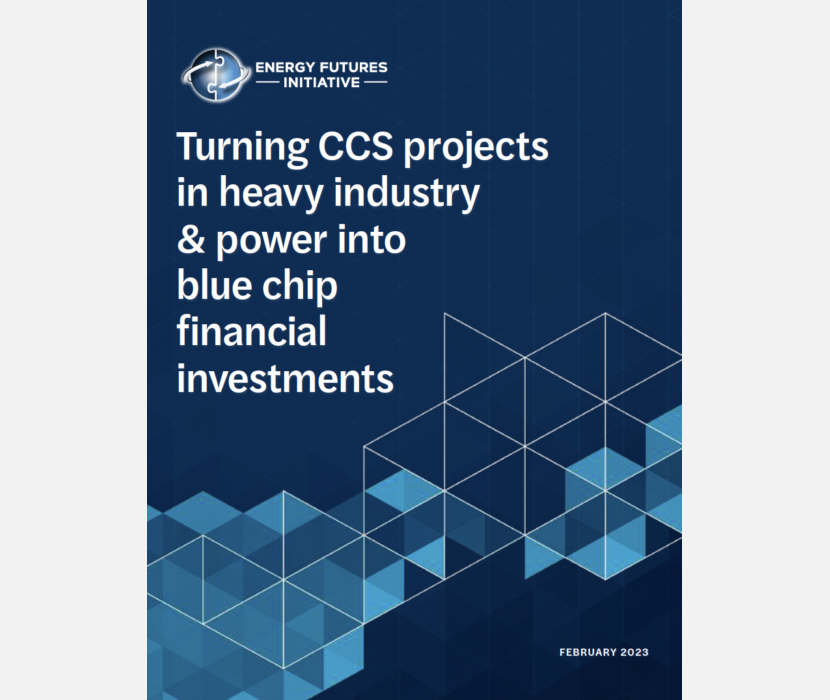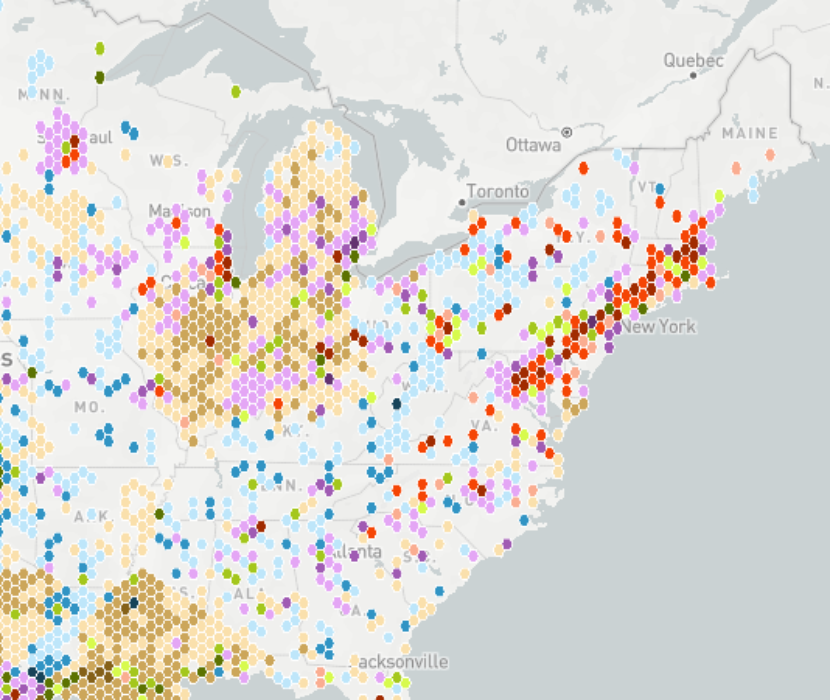From the Ground Up: Cutting-Edge Approaches for Land-Based Carbon Dioxide Removal (December 2020) is an Energy Futures Initiative (EFI) report that reviews technologically enhanced terrestrial and biological carbon dioxide removal (CDR) and issues recommendations for policymakers. It is part of EFI’s three-part “Frontiers of CDR” series, which builds on EFI’s 2019 “Clearing the Air” report and examines critical but underexplored CDR pathways.
Prior to the industrial revolution, the terrestrial biosphere kept carbon emission in balance. However, since then, the Earth’s ecosystem has not been able to keep up with the amounts of human-produced emissions. Therefore, there is an opportunity to technologically enhance natural methods of carbon removal, increasing their capacity to capture and store carbon. While funding exists for more well-known methods of terrestrial and biological carbon capture (e.g., direct air capture and bioenergy with carbon capture and storage), there exist multiple pathways with significant potential that are underexplored. These pathways include replenishing soil organic carbon and developing genetically modified plants with a reduced need for water and increased capacity to store carbon.
The report explains, “Exciting new scientific research opportunities in terrestrial CDR pathways have the potential to supercharge land-based ecosystems. Technologically enhanced biological and terrestrial CDR can greatly expand the range of options for capturing and storing carbon in terrestrial ecosystems” (p. 10).
EFI organized six workshops of more than 100 leading scientific experts to address preliminary research questions and further define research opportunities. As stated in the report, these meetings were organized into nine specific areas:
- Identifying and isolating key useful traits in biological materials
- Applying the tools of biotechnology to engineer better plants with those useful traits
- Expanding applications for more carbon-storing perennial plant systems and greater use of marginal lands
- Applying biotechnology to trees
- Assessing the ethical, legal, and social implications of biotechnology CDR applications
- Developing new tools for measuring and monitoring terrestrial carbon sequestration
- Improving computer models of biological and terrestrial CDR processes
- Researching rates of adoption and diffusion of new crop varieties and management practices
- Analyzing lifecycle impacts of biological and terrestrial CDR pathways
Key findings and policy recommendations include the following:
- Interdisciplinary science innovation increases the number of biological and terrestrial carbon dioxide removal pathways, but these pathways should proactively address any associated social, ethical, and legal challenges.
- Research, development, and demonstration portfolios focused on replenishing and storing organic carbon in soil should be pursued, as well as a focus on developing new strains of plants with a greater capacity for carbon absorption.
- In addition to removing carbon from the atmosphere, these biological and terrestrial CDR pathways dovetail agricultural objectives, including increasing yields and developing new revenue streams for farmers.
- Policy action is needed to address challenges in scaling soil-based carbon removal pathways.
EFI released this report alongside the other two reports in the series—“Uncharted Waters” and “Rock Solid”—during EFI’s webinar launch event on December 10, 2020. The event featured presentations by project leads Aristides Patrinos (Novim), Brad Ack (Ocean Visions), and Sasha Wilson (University of Alberta). The report attracted media coverage from OilPrice.com and Cornell University’s Cornell Chronicle.
Webinar Event
Supplemental Material
Related Content
(Share this post with others.)









